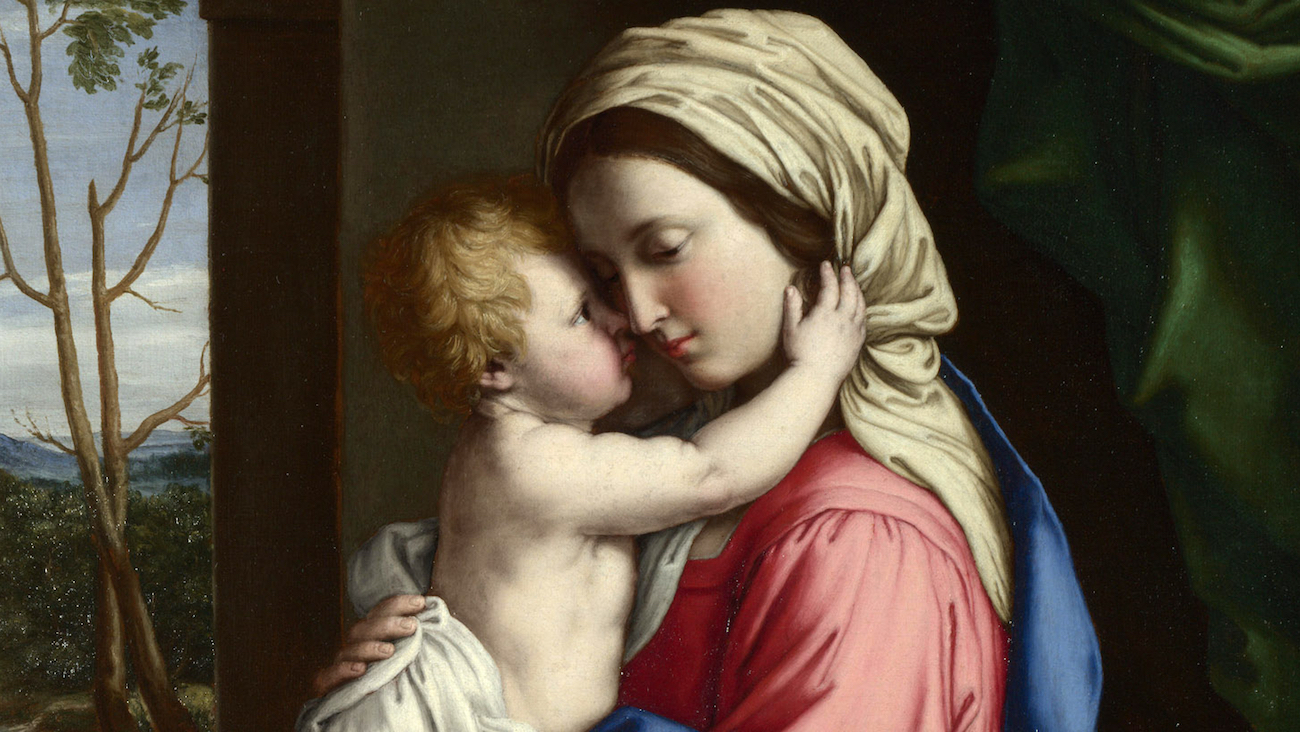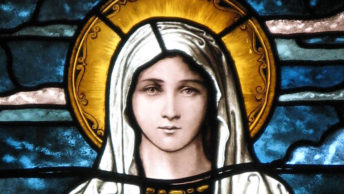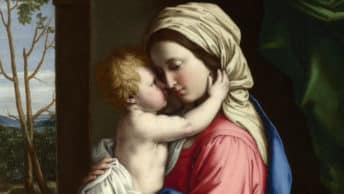At this time of year, every Christian’s thoughts turn to the beginning of what is known as “The Greatest Story Ever Told,” and their focus is rightly on the babe in the manger, the Son of God, the Savior of the World. But my thoughts also turn to Jesus’ relationship to the woman who brought Him into the world in that manger. Little is found in the Gospels about that relationship; we can only infer what is likely from from what Scripture says and what we know about human nature.
Scripture tells us that an angel appeared to Mary and told her she had “found favor” with God, and that the power of God would “overshadow” her and she would conceive and bear the “Son of the Most High.” She replied, “My soul magnifies the Lord,and my spirit rejoices in God my Savior! For He has looked with favor on the humble state of His servant. From now on all generations will call me blessed.” Scripture tells us, as well, that when she visited her cousin Elizabeth, she was greeted with similar words: “Blessed are you among women, and blessed is the fruit of your womb! (Luke 1)
Scripture next tells us of Jesus’ humble birth and how the shepherds spread the word of the event “and all who heard it were amazed at what the shepherds said to them . . . [and] Mary treasured up all these things and pondered them in her heart.” Not long later, Mary and Joseph took Jesus to the Temple for purification, at which time Simeon predicted that Jesus was “destined to cause the falling and rising of many” and that “a sword [would] pierce [Mary’s] own soul.” Afterward, we learn, Mary and Joseph “returned to Galilee to their own town of Nazareth. And the child grew and became strong; he was filled with wisdom, and the grace of God was on him.” (Luke 2)
Scripture is silent about Jesus’ life from His purification in the Temple until his experience in the Temple at age 12, when he sat in discussion among the teachers and “everyone who heard him was amazed at his understanding and his answers.” When Mary and Joseph found him there, He wondered why they had been searching for Him, saying “Didn’t you know I had to be in my Father’s house?” Scripture then adds, “But they did not understand what he was saying to them. Then he went down to Nazareth with them and was obedient to them. But his mother treasured all these things in her heart (a phrase used twice in Luke 2, at 19 and 51). And Jesus grew in wisdom and stature, and in favor with God and man.
After the Temple story, Scripture is silent again about Jesus until His public life begins 18 years later. His first miracle, we learn, took place at the wedding in Cana. The context of that miracle offers one of the clearest indications in Scripture of the relationship of Jesus with his mother: “Jesus’ mother was there, and Jesus and His disciples had also been invited to the wedding. When the wine ran out, Jesus’ mother said to Him, ‘They have no more wine.’ ‘Woman, why does this concern us?’ Jesus replied. ‘My hour has not yet come.’ His mother said to the servants, ‘Do whatever He tells you.’” They did so, and Jesus changed the water into wine! (John 2 )
That exchange between mother and son is rich with meaning. Mary does not ask Him a question, but instead merely states a fact; Jesus then says that the moment for his public life to begin has not yet arrived, clearly implying that the Father’s plan would be altered if He became involved. What comes next is unexpected, even shocking—instead of accepting Jesus’ explanation and saying no more, Mary seems to expect that Jesus will change God’s timetable for her and directs the servants to do as Jesus asks. (John 2 1-5) And Jesus proceeds to perform the miracle before the ordained time!
Mary was either being amazingly presumptuous or she knew that Jesus would do as she wished and the Father would approve of His doing so. Is the latter hard to believe? Not if we remember that Mary had “found favor” with the Father—in other words, had been chosen to be the mother of the Son of God and was, in the most meaningful sense, “blessed among women.”
Let’s consider Mary’s blessings more specifically: She lived with Jesus for 30 of his 33 years. She shared her chromosomes with Him, provided his nutrition and oxygen while He was in her womb, nursed him in infancy, prepared his meals thereafter, and no doubt taught him how to speak, how to pray, how to sing, and how to follow His Father’s commandments. She surely also salved his wounds, laughed and cried with him, inspired him with her love of His Father in Heaven, demonstrated in a thousand ways her love for Jesus, and in time shared His suffering, as only a mother could, when He was tortured, humiliated, and hung from the cross.
It is no exaggeration to suggest that Mary loved Jesus more than any other human being, including the holiest of saints, could ever love Him. And there can be no doubt that Jesus loved Her, both in the way God loves and in the way that Jesus taught us to love others.
The prayer most associated with Mary begins by echoing Scripture: Hail Mary, full of grace. Blessed art thou among women, and blessed is the fruit of thy womb Jesus. It then continues: Holy Mary, mother of God, pray for us sinners now and at the hour of our death, Amen.
Note that all that the prayer asks of Mary is that she pray for us. When Catholics recite this prayer, they not only show respect for Mary. They also honor the Father who “favored” her and the Son who loved her.
Copyright © 2020 by Vincent Ryan Ruggiero. All rights reserved








